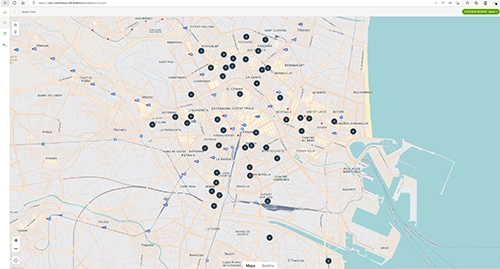Trends
Trends
MAY
05
2023
Smart Services & IoT
IoT is an ally in reducing energy poverty and unwanted loneliness
Atenzia and the Chair of Urban Energy Transition of the Polytechnic University of Valencia, together with Cellnex, have completed the Social Energy and Comfort at Home: Major Challenges (ESM) project. This is a pioneering initiative in Valencia created to identify and mitigate situations of energy vulnerability in older people in the city.
The programme saw the participation of 100 users of the City Council’s municipal teleassistance service. It is precisely the over-65s who are most vulnerable to energy poverty, according to the indicators included in the National Strategy to combat Energy Poverty from Spain’s Ministry for the Ecological Transition and the Demographic Challenge (MITECO).
The homes of the participants were analysed throughout the 12-month duration of the project, informing and making these users aware of energy efficiency and the savings this entails. To this end, the project had Cellnex as a technological partner, with the company installing various devices for monitoring and measuring indicators such as humidity, temperature and air quality. These data were collected through the Cellnex Smart Brain platform with the aim of digitising the process of obtaining and managing data, through the Internet of Things (IoT), and thus increasing the comfort of the homes studied.
The results of these analyses were used to advance the project and customise it. In this connection, Atenzia, a company specialised in the social health field and with extensive experience in teleassistance services, was responsible for personalised monitoring of each case and each participating household and providing tailored recommendations for each one.
Furthermore, in conjunction with the more extreme summer and winter temperatures, two special campaigns were run within the project. Two workshops were held to this end, one for each campaign, and follow-up calls were strengthened in which recommendations were provided to respectively decrease or increase the temperature in the home efficiently.
In total, in addition to the continuous monitoring with the devices, a total of 1,300 follow-up communications and 800 home visits were made during the 12-month duration of the project. This follow-up made it possible to identify a high percentage of vulnerability deriving from energy poverty. Similarly, it served to reveal that about a third of the participants suffer from some type of loneliness.
The Social Energy and Home Comfort: Major Challenges (ESM) project was devised with a threefold objective: firstly, to inform and raise awareness among participants on energy poverty; secondly, to advise and provide personalised recommendations and continuous follow-up; and finally, to reduce unwanted loneliness in cases detected through increased follow-up by health specialists.
The results obtained after the conclusion of the project confirm the success of the initiative and this emerges from the surveys carried out on the participants once it is concluded:
- 94% of respondents consider the personalised recommendations received very helpful
- and 45% have implemented practical measures at home.
- 84% say they have reduced their loneliness and feel more supported through the programme.
With the results obtained, Atenzia and the Chair of Urban Energy Transition will study the possible risks of the situation and follow-up actions to create new lines of work to reduce energy poverty in Valencia.

















